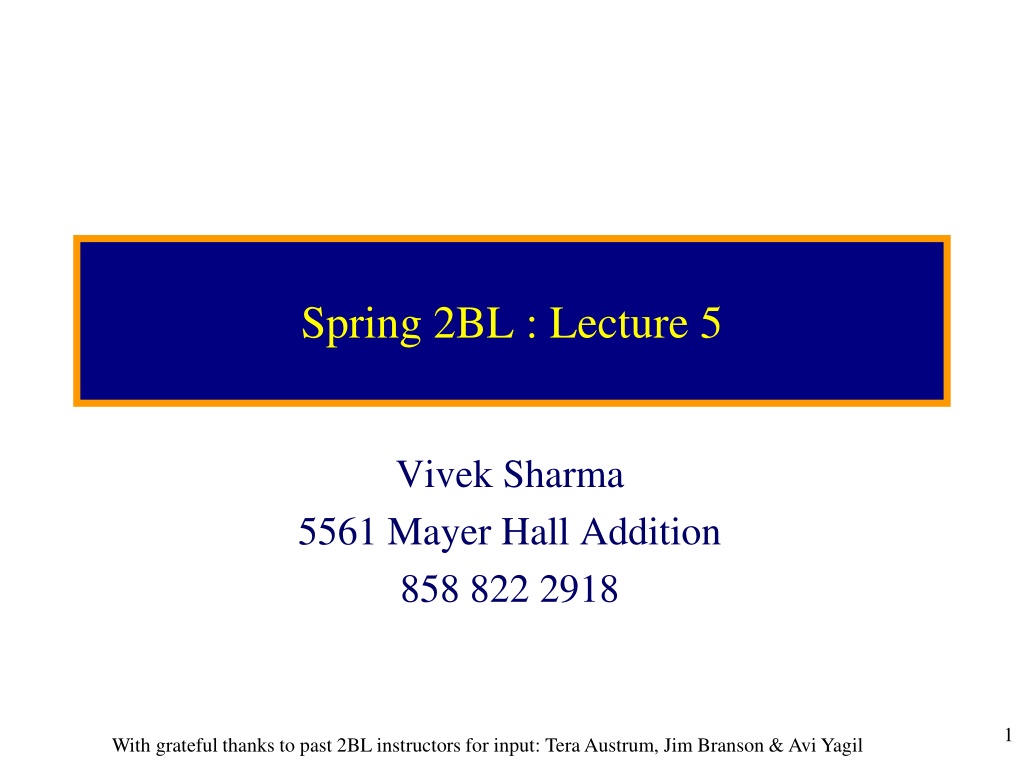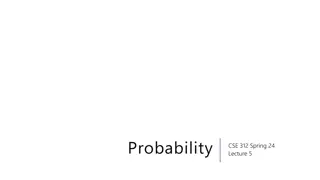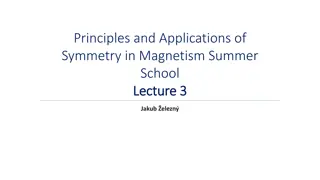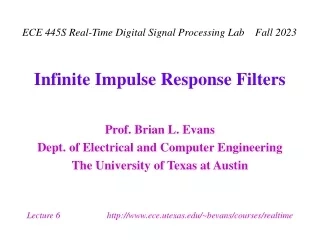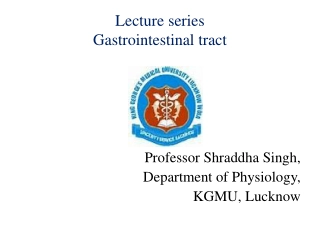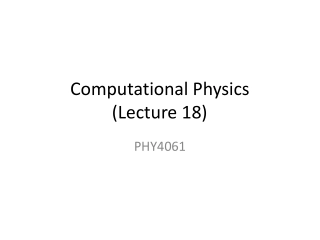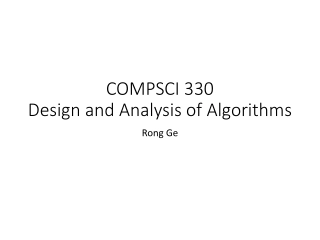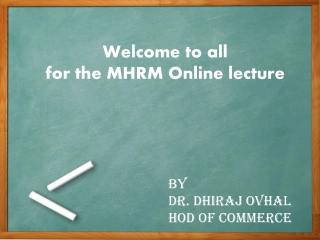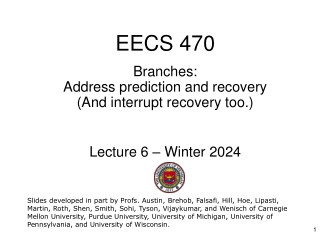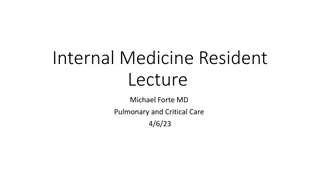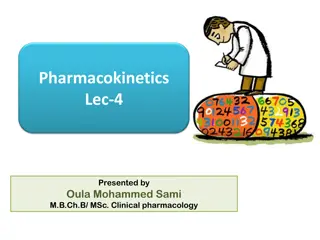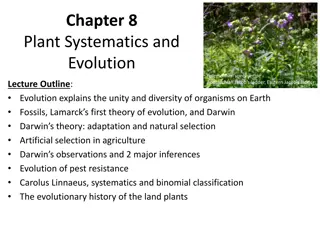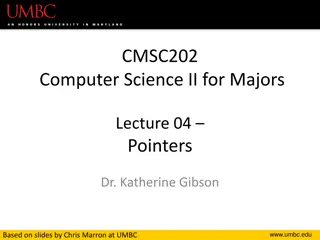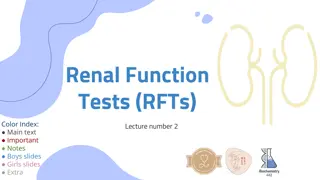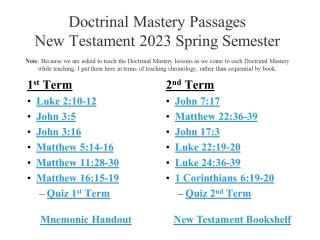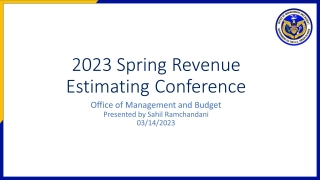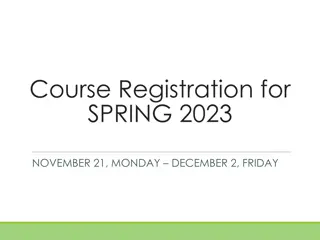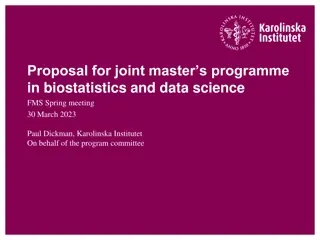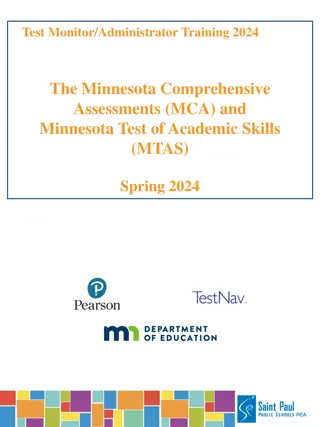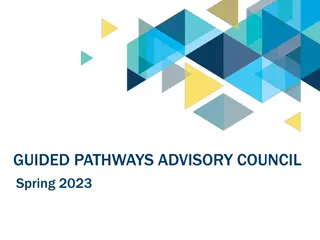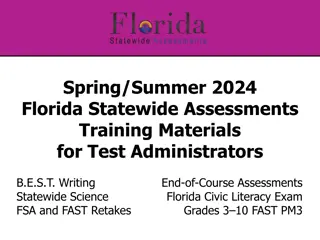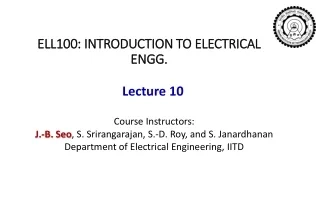Spring 2BL : Lecture 5
In Lecture 5 of the Spring 2BL course with Vivek Sharma, students will delve into probability distributions, confidence levels, and the visualization of data through histograms. The lecture covers topics like calculating the mean and standard deviation, understanding the uncertainty in measurements, and creating binned histograms. Students are also reminded to submit Experiment #2, attend office hours for assistance, and read Chapter 7 from the Taylor book. The content emphasizes the importance of visualizing data distribution as the number of measurements increases.
Spring 2BL : Lecture 5
PowerPoint presentation about 'Spring 2BL : Lecture 5'. This presentation describes the topic on In Lecture 5 of the Spring 2BL course with Vivek Sharma, students will delve into probability distributions, confidence levels, and the visualization of data through histograms. The lecture covers topics like calculating the mean and standard deviation, understanding the uncertainty in measurements, and creating binned histograms. Students are also reminded to submit Experiment #2, attend office hours for assistance, and read Chapter 7 from the Taylor book. The content emphasizes the importance of visualizing data distribution as the number of measurements increases.. Download this presentation absolutely free.
Presentation Transcript
Spring 2BL : Lecture 5 Vivek Sharma 5561 Mayer Hall Addition 858 822 2918 1 With grateful thanks to past 2BL instructors for input: Tera Austrum, Jim Branson & Avi Yagil
Schedule For Week 5 Lecture on Probability distributions, Confidence Levels This week ( B ) you will finalize and submit Experiment #2 by the end of your lab session Be sure to read & follow experiment rubric as you write lab report Go to LTAC office hour (Today 2-4 pm 2722 MHA) if you need help (particularly with Excel or if you need to retake data) Read Chapter 7 from Taylor book Section A02 (Tuesday, 3:30 pm) students should mail to TA (ngrogers@ucsd.edu) the Lab #2 quiz score and show him the quiz sheet in the next lab. 2
Histograms & Limiting Distributions Measure Multiple, N, measurements of the same quantity, x Calculated average and spread of values Mean and Standard deviation Determine the uncertainty on the mean Standard Deviation On Mean (SDOM) As you take more and more measurements you want to visualize the distribution of the measurements you make A convenient way to visualize data: plot measured value in binned histogram As the number of measurements N becomes very large, you see a clear shape emerging from distribution of measured values The limiting distribution 3
How To Make A Binned Histogram Determine the range of your data (largest value - smallest value) Choose number of bins ( 4) Width of bins, k, is the range divided by # of bins Usually bin width = List bin boundaries, count # of data points, nk, in each bin Draw histogram x- scale represents the measured values y-scale, fk is the # measurements in each bin fk xk 5
Normalized Histogram Want the area of each bin to equal the probability of finding a measurement within that bin Area of rectangle k: Ak = fk k fk = vertical scale k = width of bins Fraction of data in bin: Fk = nk/N nk = # measurements in kth bin N = total number of measurements Choose fk so Ak = Fk (Total area of histogram = 1) k fk Ak n2 n3 n4 n5 n1 N = n1 + n2 + n3 + n4 + n5 6
Limiting Distributions As N increases, a limiting distribution comes into shape f(x) Choose normalization of limiting distribution Such that = probability of observing a measured value between A and B f(x)dx =1 B - f(x)dx = PAB A 8
The Gaussian ( or Normal) Distribution The limiting distribution for a measurement x subject to many small random errors is bell shaped and centered on the true value of x The mathematical function that describes the bell-shaped curve is called the normal distribution or Gauss function : G(x) e-(x-X)2/2s2 Defined by two parameters: = width parameter X = true value of x 9
The Normalized Gaussian Distribution + Normalization The normalized Gaussian function is G(x)dx =1 - 1 e-(x-X)2/2s2 GX,s(x)= s 2p For a Guassian form Standard deviation x is the width parameter Mean value of x = true value X 10
Gaussian Distribution Shape: Changing s s s s s 12
The Meaning Of In A Gaussian Distribution GX,s(x) tells us probability of obtaining any given value x B PAB= G(x)dx A an answer in the range a x b is the probability that any one measurement gives The probability that a measurement will fall within ts X+ts X+ts 1 s 2pe-(x-X)2/2s2 P ts= G(x)dx = X-ts X-ts 13
Probability Of A Measurement In Terms Of t Taylor book Table A Page 287 14
Compatibility Of A Measured Result: t-score actual deviation from mean standard deviation t = 16
Acceptability Of A Measurement Large probability means reasonably likely outcome Small probability means reasonable chance of discrepancy What is reasonable depends on some convention We will define < 5% probability (t >1.96) as significant discrepancy <1% probability (t >2.58) as unreasonably large discrepancy Prob(outside ts) = 1- Prob(within ts) If probability is less than 1% , we declare data incompatible with expectation 17
t-Score Test And Confidence Level The Confidence Level is the probability to get a worse result than you measured. A student measures g, the acceleration of gravity, repeatedly and carefully, and gets a final answer of 9.5 m/s2 with a standard deviation of 0.1 m/s2. If his measurement were normally distributed, with a mean at the accepted value of 9.8 and with = 0.1, what is the probability of getting an answer that differs from 9.8 by as much as (or more than) his result ? 9.8 9.5 0.1 Its three standard deviations off the mean. Looking up the probability: = = 3 t we see that 99.73% measurements are within 3 sigma, so, the probability that his measument is compatible with g= 9.8 is 0.27%. 18
t-Score and Confidence Levels Two students measure the radius of a planet. Student A gets R=9000 km and estimates an error of s = 600 km. Student B gets R=6000 km with an error of s =1000 km. What is the probability that the two measurements would disagree by more than this (given the error estimates)? Define a quantity q = RA-RB = 3000 km. The expected q is zero. Use propagation of errors to determine the error on q s s s = + Compute t, the number of standard deviations from the expected q 9000 6000 q t s Now look at Table A. 98.95% should be within 2.56 . So the probability to get a worse result is 1.05%. We call this the Confidence Level of measurement, and in this case is it BAD ! = 2 A 2 B 1170 km q = = = 2.56 1170 q 19
Rejection Of Data Rejecting data in an unwarranted fashion can bias your measurements. If there is suspicion of a mistake, data should be rejected without looking at the value measured. If only the measured value is suspicious, we should have a prescription for data rejection. We will use one called Chauvenet s Criterion Data are rejected if we expect less than 0.5 measurements with a deviation from the mean as large or larger than the one in question. The criterion should be reapplied after the worst case is rejected. What would you call a follower of Chauvenet ? 20
Example Of Chauvenets Criterion A student makes 14 measurements of the period of a pendulum. She gets the following measurements, all with the same estimated error: T= 2.7, 2.3, 2.9, 2.3, 2.6, 2.9, 2.8, 2.7, 2.8, 3.2, 2.5, 2.9, 2.9, and 2.3 Should any of these measurements be dropped? n 1 n = x x Add up all the periods and divide by 14 to get the average, T=2.7 seconds Compute the standard deviation from the data, s = 0.27 seconds The measurement furthest from the mean is 3.2 seconds giving t = 0.5/0.27 =1.85. Look up the probability to be further off => P=6.43% Multiply by the number of measurements to get the expected number of events that far off, nexp=(14)(0.0643)=0.9 Do not drop this measurement (or any other) i = n 1 i 2 1 ( ) s = 2 x x x i 1 n = 1 i Assume the student made a 15th measurement but her partner bumped the pendulum during the measurement. She got a period of 2.8 seconds. Should she drop this measurement? Why ? 21
The Maximum Likelihood Principle The best estimate for X and s of N observed measurements xi are those for which Probability PX,s(xi) is maximum 23
The Maximum Likelihood Principle 2 ( ) x X s 1 s Recall the probability density for measurements of some quantity x. e = 2 ( ) x X P 2 , s 2 Normal distribution is one example of P(x). Now, lets make repeated measurements of x to help reduce our errors. , , , ..., n x x x x 1 2 3 We define the Likelihood as the product of the probabilities. The larger L, the more likely a set of measurements is = ( ) ( P x P x P x ) ( )... ( ) L P x 1 2 3 n Is L a Probability? The best estimate parameters of P(x) are those that maximize L Why does max L give the best estimate? 24
Proof That Mean Is Best Estimate of True Value X L L X Assume X is a parameter of P(x). When L is maximum, we must have = 0 Xbest X Lets assume a Normal error distribution and find the formula for the best value for X. L X=0=Ce c2 X c2 X 2-1 c2 X -c2 2 n =0 L= P(x1)P(x2)...P(xn)= P(xi) i=1 n =1 s2 (xi- X)=0 2 n (xi-X )2 2s2 - (xi-X )2 2s2 - n 1 1 i=1 2pse 2sne L= = i=1 n n (xi- X)=0 (2p) i=1 i=1 n L=Ce-c22 xi-nX =0 Q.E.D. the mean (xi- X)2 s2 n i=1 X =1 c2= (definition) n xi i=1 n 25 i=1
Error On The Mean n 1 n Formula for mean of measurements. (We ve shown that this is the best estimate of the true x.) = x x i = 1 i Now (simply) use propagation of errors to get the error on the mean. x x x x s = s s s ... x x x x x x 1 2 n 1 2 n 1 n x x = i What would you do if the xi had different errors? 2 s 2 s s n x s = = = n i x n n n = 1 i We got the error on the mean (SDOM) simply by propagating errors. 26
Weighted Average We can use maximum Likelihood ( 2) to average measurements with different errors. 2 n x X = = 0 2 i s 2 i X = 1 i 2 n x X n n 1 x = 2 i = 0 X i s s s 2 i 2 i n = = 1 i i = = 1 1 i i w x i i 1 We derive the result that = x 1 n i w i s 2 i w i = 1 i n n = = 0 w x X w i i i From error propagation, we can determine the error on the weighted mean. = = 1 1 i i 1 n s = w x x i i n = = w X 1 n i i = 1 i What does this give in the limit where all errors are equal? w i = 1 i 27
An Example Of Weighted Average Suppose 2 students measure the radius of Neptune. Student A gets r =80 Mm with an error of 10 Mm and student B gets r = 60 Mm with an error of 3 Mm. What is the best estimate of the true radius of Neptune ? 10080+1 1 100+1 1 960 r =wArA+wBrB wA+wB = =61.65 Mm 9 What does this tell you about the importance of error estimates? Is there a Democracy or a Meritocracy when it comes to measurements ? 28
